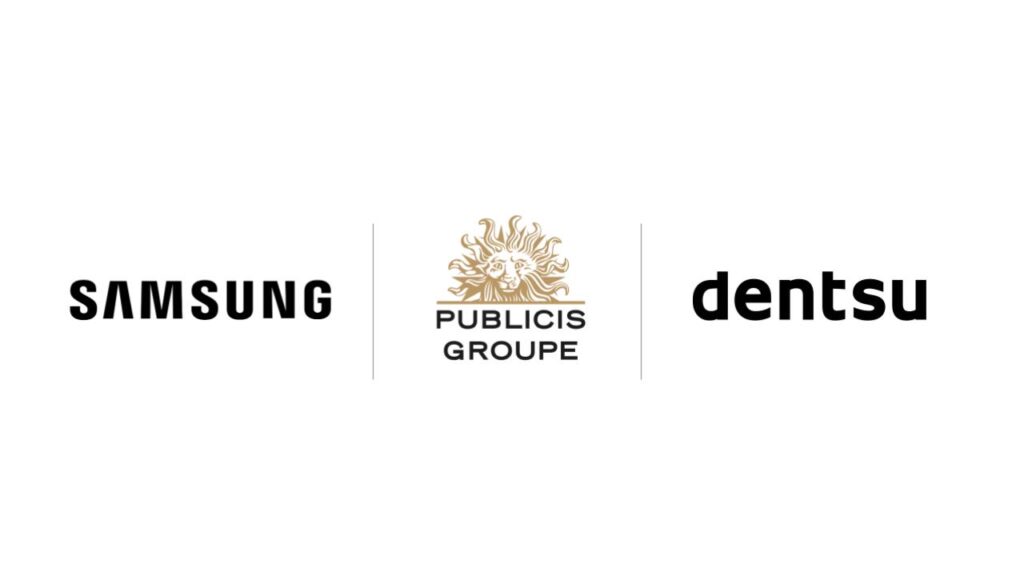This will be WARC's 10th edition of the Marketers' Toolkit and in the words of the VP of content at WARC, David Tiltman himself, " the questions facing marketers as we approach 2021 are more profound than any previous year." In hindsight, the impacts of 2020 were necessary in some sense. It helped break old thought patterns and habits and allowed people to build new ones. Look at ideas and thoughts from new perspectives. However, such monumental changes also bring with it, their own set of challenges.
Responding to Recession
The seismic events of 2020 have been traumatic, to say the least. As Communicate covered in earlier reports: media budgets have been slashed, brand-building activity is on hold, while performance channels receive greater spend. At the same time, brands must find new creative solutions to achieve recognition in the post-pandemic marketplace.
The insights in this toolkit are based on global surveys with 1000+ marketing executives and one-on-one interviews with more than 20 CMO's and marketing leaders. Based on their feedback, 73% believe that majority of budgets will be allocated towards influencer marketing in 2021. Respondents also believe that nascent channels including gaming and podcasts can be optimistic of growing ad revenues over the coming 12 months, while print and cinema media will be bracing for a tough year.
Prior to the pandemic, Facebook and Google have been enjoying a duopoly in the digital advertising market. The pandemic has only helped tighten their grip on the market and it will be carried forward into 2021. With the rise in online shopping habits, brands are seeking to reach consumers in shoppable moments, Amazon and TikTok are both rising up the agenda – with 44% of advertisers planning to spend more on the social video app next year.
Advertisers are still trying to reel from the twin impact of the global recession and unprecedented consumer behavior change. Experts expect budget cut in 2021 as well with 70% predicting that the axe will fall majorly on brand advertising spend. Meanwhile, with consumers still restricted from attending events for the foreseeable future, over half (53%) forecast a decrease in sponsorship spend.
Given the turmoil caused by the pandemic, short-termism remains the leading cause for concern among advertisers in 2021. However, brand marketeers believe they are doing a much better job of balancing short-term and long-term brand strategy than their agency partners. Only 3% of agency respondents believe the brands they work on are doing an excellent job, compared to 12% of client-side marketers.
Brand marketeers are responding to this desire for value in a number of ways, by focusing ad spend on specific product lines (33%), running price promotions and sales (30%), reducing their product portfolio (21%), and altering pack sizes (20%). Four in ten respondents say they are developing new product offerings to cater to post-pandemic consumer preferences.
Staying effective in the age of e-commerce
The COVID-19 pandemic has accelerated e-commerce growth globally. Brands in many sectors have had to respond, bringing forward plans to rethink distribution and experimenting with new models, including direct-to-consumer options. This shift will have knock-on effects on brand strategy and media investment.
Reports and expert opinions suggest that the shopping habits developed this year will stick, particularly among certain cohorts. 67% of client-side respondents expect the shift to e-commerce to be permanent. Retail (63%) food and drink (47%) and FMCG (44%) are other sectors that also agree strongly with the statement.
With the change in preferences and shopping habits, brands have a lot of changes to make on their end. But one of the aspects that should definitely be kept on high priority is the online customer experience. The study noted that 64% of respondents will focus on improving the online customer experience while 47% plan to increase the number of online channels they sell-through. Marketeers will also need to rethink media plans and advertising strategies, to ensure their products and services are noticed by and engage, at-home consumers.
Online shopping grew along with its own set of content trends, particularly, live streaming or live video shopping. The popularity of this trend is growing in all regions. 35% of respondents in Asia cited it as a vital emerging technology, alongside 37% in Europe and 38% in North America. It ranked top in China (48%).
Engaging at-home consumers
The work from home phase was initially viewed as a temporary precaution worldwide but this trend is likely to continue well into 2021 and also have a profound impact on consumers’ lives and attitudes. As consumers navigate the COVID-induced recession, use e-commerce tools to buy things safely, try to support local businesses, and wait on government action to approve and deploy vaccines, brands also need to be aware of the pandemic’s emotional cost, and how they can make consumers’ lives just a little bit better.
Needless to say, post-pandemic changes in behavior are going to have a significant impact on strategy for 2021. 74% of the brands and agencies that were surveyed agreed with the statement. Only one percent said it was having no effect at all. Other major concerns fall under the umbrella of behavior as well, with 91% saying health and hygiene was affecting strategy and 80% citing mental health issues.
The shift to consumers using ever more e-commerce has rightfully taken center stage during the pandemic, but it is the tip of the iceberg when it comes to behavior change. The shift to increased time at home is almost as significant for marketeers, with 52% saying it has impacted strategy. The decline in travel and leisure spend, a re-evaluation of lifestyle choices and the demand for stay-at-home entertainment are also factors marketers are weighing as they look to 2021.
Global YouTube data from Digital Voices demonstrates strong growth in video views of a variety of homebound pursuits, with content involving food and drink, home and DIY, and health, fitness, and self-help all seeing growth in excess of 20% between February and March. The data became even further stacked in favor of at-home activities by June, with gaming seeing the biggest growth of all, at 30.8%, followed by animals and pets (21.6%), food and drink (17.9%), and home and DIY (17.4%).
Succeeding in the closed web
The third-party cookie is on the verge of obsolescence, as a consequence of regulatory pressures and the unilateral actions of companies including Apple and Google. This gives even more power to ecosystems like Amazon and Alibaba. With digital advertising dominated by a small number of media platforms, marketers face the daunting task of figuring out a way of managing their activity across those garden walls.
Only a third (34%) of respondents agree or strongly agree that the brands they serve are prepared for life after the cookie. Nearly as many advertisers (29%) claim they have no plan in place to collect and manage customer data. But many expect this to be a priority for brands of all kinds over the coming 12 months.
As Google, Facebook, and Amazon carve out an ever-greater share of the advertising market, concerns are growing that they have become too dominant over the industry. Over four-fifths, (81%) of respondents agree that COVID-19 has only served to concentrate power in the hands of ‘big tech’, while 83% of respondents agree or strongly agree that those firms should be subject to “greater regulation” to help level the playing field.
Client-side marketeers surveyed by WARC for the Toolkit use a variety of measurement systems to isolate the impact of their marketing investment. The most popular are brand lift studies, selected by 44% of brands, followed by marketing mix modeling (35%), attribution modeling (27%), and econometrics (17%). Nearly three-in-ten implement no measurement model at all.
Over half (59%) of client-side respondents agree or strongly agree that their brand has a strategy to actively gather first-party data. Only 5% disagree or strongly disagree with this statement, suggesting that growing numbers of advertisers believe they must gain a stronger grip on customer information to maintain content relevancy in the post-cookie media landscape.
Structuring for volatility
Marketeers spent much of 2020 in crisis response mode. There were the internal challenges of lockdown, social upheaval, the intensity of so-called 'culture wars' and the business impact of changed consumer circumstances. Unfortunately, 2021 promises more of the same. Marketeers are doubling down on fast consumer insights, looking to determine which new trends are here to stay and which are just a flash in the pan. It’s an opportunity as well as a challenge: the marketeers able to lead this agenda and help their businesses navigate the next 12 months will gain influence.
If there's a word that's made rounds in almost every industry this year it's digital transformation. And the market is going to be hearing more of that word in 2021 as well. 93% of respondents agreed that the pace of digital transformation has been hastened by COVID-19. With e-commerce booming and consumers developing new shopping behaviors, it’s no surprise that the top priority for digital transformation is customer experience. Data organization and management is also top of mind, especially as marketeers seek to generate faster insights in a period of uncertainty.
In a constantly changing environment, fast and accurate consumer insights will be crucial for brands looking to get ahead in 2021. But, according to the study, marketeers feel their company has a weakness in this area. Over half – 57% of client-side marketeers rated their businesses as a three out of five or below, while 72% of agencies felt their clients were three or below.
Finding the white space in wellness
Health and wellness have taken center stage in 2020 and their importance will grow in 2021 as the pandemic endures and the rebuild begins. A growing range of brands are moving into this space, adapting to cater to emerging consumer priorities around both physical and mental wellbeing. As healthcare becomes more digital, brands need to consider their offerings to ensure inclusivity and trust.
Beyond brands that typically fall in the health and wellness sector, the COVID-19 pandemic has made consideration of health and hygiene a necessity for everyone. These sweeping changes range from COVID-secure retail and travel, to financial brands flexing to meet the needs of stressed customers unable to work through lockdown and recession.
Wellness, self-care, burnout, and stress will have some or significant impact on the development of the 2021 marketing strategy for 80% of respondents to the survey (including 82% of clients). These issues affect not only consumers but employees of brands as well.






